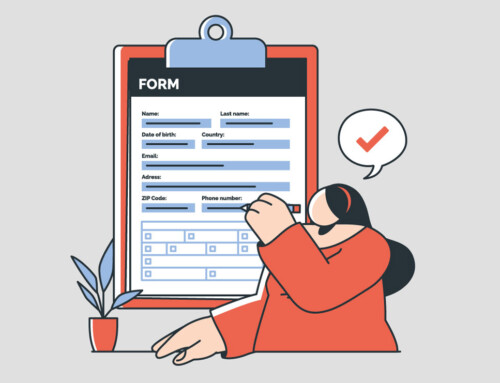Contents
Eggshell Plaintiff Rule: A Crucial Doctrine in Personal Injury Law
The Eggshell Skull Rule and the Eggshell Plaintiff Rule are closely related legal doctrines used in tort law. They ensure that defendants are held accountable for all harm caused to plaintiffs, even if the plaintiffs have preexisting conditions or vulnerabilities that exacerbate the harm. The Eggshell Plaintiff Rule is a key principle in personal injury law that emphasizes the idea of accepting your victims as they are. This rule protects individuals who, because of pre-existing conditions or particular vulnerabilities, may suffer more severe harm than someone else might in the same situation. In this blog, we will explore the origins, real-world applications, and impact of this doctrine, highlighting its importance in delivering justice for those most at risk.
Origins and Legal Foundation of the Eggshell Plaintiff Rule
The Eggshell Plaintiff Rule, also known as the “Thin Skull Rule,” is a foundational principle in tort law that asserts a defendant must take their victim as they find them. This rule, rooted in fairness, ensures that if a plaintiff has a pre-existing vulnerability or condition that exacerbates their injuries, the defendant is fully liable for the resulting harm, even if the extent of the injury was unforeseeable. Lawyers often cite the eggshell skull rule to remind juries that the fragility or unusual sensitivity of an injured party does not absolve the defendant of liability.
The rule has its roots in English common law, a legal tradition that dates back centuries. It originated from early cases that sought to address the responsibility of wrongdoers for the full consequences of their actions, irrespective of the victim’s unique characteristics. In the English case of Smith v. Leech Brain & Co. Ltd. (1962), the court upheld that the defendant was liable for the full extent of the plaintiff’s injuries, even though a pre-existing condition amplified the harm.
One of the earliest cases often cited is Vosburg v. Putney (1891), a Wisconsin case that laid out the principle in American law. This case, which involved a seemingly harmless kick, demonstrated the practical application of the rule. The court held that even a minor act could render the defendant liable if it caused severe harm due to the plaintiff’s pre-existing condition.
The principle of the Eggshell Plaintiff Rule is deeply rooted in the broader tort doctrine of proximate causation and foreseeability. Proximate causation refers to the legal concept that a defendant is only responsible for the harm that is the direct result of their actions. While foreseeability typically limits liability, the Eggshell Plaintiff Rule is an exception, emphasizing the duty of care owed by the defendant, regardless of the plaintiff’s physical or psychological vulnerabilities.
The Eggshell Plaintiff Rule is anchored in the principle that:
- Causation is Key: If the defendant’s actions are the actual cause of the harm, liability extends to the full extent of the injury, even if the injury is more severe than what would typically be expected.
- Foreseeability is Not a Barrier: The rule overrides the usual requirement that damages must be foreseeable, holding that once negligence or wrongdoing is established, the defendant must bear the full consequences.
- Statutory Recognition: While primarily a common law rule, the principle is often embedded in tort statutes and personal injury law frameworks in jurisdictions where tort liability has been codified. This means that the rule can apply in a wide range of legal contexts, from personal injury cases to workplace accidents, ensuring that defendants are held accountable for the full extent of their actions, regardless of the plaintiff’s unique characteristics.
Why the Eggshell Plaintiff Rule Matters
The Eggshell Plaintiff Rule in personal injury law ensures defendants are fully liable for harm caused, even if the plaintiff’s pre-existing conditions make their injuries more severe than usual. It holds defendants accountable regardless of the plaintiff’s vulnerabilities. Here is why this rule is so significant:
Fairness and Accountability
The rule ensures that defendants are held accountable for the full extent of harm they cause, regardless of the plaintiff’s condition. This discourages negligent or reckless behavior such as speeding, not maintaining a safe environment, or failing to provide adequate warnings, and aligns with the principle that the wrongdoer should bear the cost of the injury rather than the innocent victim.

Protection for Vulnerable Individuals
The rule serves as a shield for people with pre-existing conditions, such as brittle bones, mental health issues, or other physical vulnerabilities. It ensures they are not penalized for their health status and acknowledges their right to full compensation for injuries caused by someone else’s negligence.
Prevention of Discrimination
The rule acts as a barrier against potential discrimination. Without this rule, defendants might argue that they should pay less compensation because the plaintiff was “weaker” or more prone to injury. The rule prevents this discriminatory logic and ensures equal treatment under the law.
Clarification of Damages
The Eggshell Plaintiff Rule helps courts and juries determine damages. The focus remains on the extent of the harm caused, not hypothetical questions about what might have happened to someone else.
Case Law and Precedent
This rule has been reinforced through numerous cases and is foundational to tort law. For example, if someone with a pre-existing condition experiences a worsened condition due to a defendant’s negligence, courts will apply this rule to ensure justice is served.
Encourages Careful Conduct
Knowing that the law will not provide leniency for “unforeseen” vulnerabilities, individuals and entities are incentivized to act more cautiously to avoid causing harm.
How Eggshell Plaintiff Rule Applies in Personal Injury Cases
The eggshell plaintiff rule, a comprehensive legal principle, is most commonly invoked in cases involving:
- Car Accidents: The eggshell plaintiff rule ensures fairness in cases where a car accident causes a minor injury that escalates due to the plaintiff’s underlying medical condition. In such instances, the defendant is liable for the full extent of the injury, upholding the principle of justice.
- Workplace Injuries: Employees with pre-existing conditions who suffer exacerbated injuries due to unsafe working conditions can invoke the rule to claim compensation.
- Medical Malpractice: If a patient with a pre-existing vulnerability suffers harm due to a healthcare provider’s negligence, the eggshell plaintiff doctrine applies to ensure the patient is compensated for the entire injury.
- Slip and Fall Cases: The eggshell plaintiff rule provides a crucial layer of protection for plaintiffs who sustain severe injuries from seemingly minor incidents due to their pre-existing conditions, ensuring their legal rights are upheld.
The Key Elements of Eggshell Plaintiff Rule
Plaintiffs play a crucial role in invoking this rule successfully, as they must establish the following key elements:
Duty of Care: The plaintiff must demonstrate that the defendant owed them a legal duty of care. This duty arises when a relationship or circumstances exist where the defendant is expected to act (or refrain from acting) to avoid causing harm to the plaintiff. For instance, drivers owe a duty of care to other road users, and medical professionals owe a duty of care to their patients.
Breach of Duty: Once a duty of care is established, it must be shown that the defendant breached it. The breach can occur through negligence, recklessness, or intentional actions. For example, failing to stop at a red light or administering the wrong medication to a patient would constitute a breach of duty.
Causation: The plaintiff must prove that the defendant’s breach of duty directly caused their injury. This element involves two key components:
Actual Cause (Cause in Fact): The injury would not have occurred “but for” the defendant’s actions.
Proximate Cause: The harm was a foreseeable result of the defendant’s breach. Even if the extent of the injury was unforeseen, the defendant can still be held liable under this rule.
Extent of Harm: The crux of the eggshell plaintiff rule lies in this element. It states that the defendant is responsible for all damages caused, even if the injuries sustained by the plaintiff are more severe than what would typically be expected for an average person. This means that the defendant must take the plaintiff as they find them, regardless of any pre-existing conditions. Whether the plaintiff has a pre-existing condition, such as brittle bones or a heart condition, does not diminish the defendant’s liability for the full extent of the harm.
Foreseeability Not Required for Extent of Harm: Unlike standard tort claims, the eggshell plaintiff rule does not require the defendant to foresee the plaintiff’s particular vulnerabilities or the magnitude of harm. As long as the general type of injury was foreseeable, the defendant is liable for the unforeseeable extent of that injury. For instance, if a defendant’s negligent act causes a plaintiff with a pre-existing heart condition to suffer a heart attack, the defendant would be liable for the full extent of the harm, even if the heart attack was more severe than what would typically be expected for an average person.
The rule embodies fairness and deterrence, ensuring that individuals who cause harm are held accountable for their actions and discouraging negligence. It also reinforces that victims should not be penalized for vulnerabilities beyond their control. This principle is particularly vital in ensuring justice for individuals with disabilities or pre-existing health conditions.
By requiring proof of these elements, the eggshell plaintiff rule plays a pivotal role in ensuring that justice is served while upholding the principle that wrongdoers must fully compensate for the consequences of their actions, regardless of the victim’s fragility.
Challenges and Controversies
The eggshell plaintiff rule is a cornerstone of tort law, sparking ongoing debate due to its balance between fairness to defendants and justice for plaintiffs. While it protects vulnerable individuals by ensuring they are fully compensated for their injuries, the rule also raises questions and controversies about its broader implications.
Unforeseeable Consequences: The eggshell plaintiff rule often leads to defendants being held liable for damages that far exceed what they could have reasonably anticipated. This can create a sense of unfairness, particularly when the extent of the harm is disproportionately large compared to the defendant’s actions.
Assessing Damages: The intricate task of quantifying damages in cases where pre-existing conditions interact with the defendant’s actions is a significant intellectual challenge. Courts often grapple with the allocation of liability for exacerbating a pre-existing condition versus its natural progression, underscoring the need for our collective expertise.
Medical Causation Issues: Proving that the defendant’s actions directly caused or aggravated the plaintiff’s condition can be contentious. Disputes often arise over whether the injuries would have occurred regardless of the incident.
Litigation Costs: Cases involving eggshell plaintiffs may require extensive expert testimony, including medical and forensic evidence, to establish causation and damages, increasing litigation costs for both parties.
Potential for Fraudulent Claims: Defendants frequently argue that plaintiffs may exaggerate pre-existing vulnerabilities to inflate damages, making it difficult to distinguish genuine claims from opportunistic ones.
Perceived Unfairness to Defendants: Critics argue that holding defendants accountable for outcomes they could not foresee or prevent is unjust. This can result in disproportionately high damages for minor negligence.
Conflict with Comparative Negligence: In jurisdictions where comparative negligence applies, tension may exist between the eggshell plaintiff rule and the principle of proportionate liability. Defendants may feel penalized for harm beyond their level of fault.
Encouragement of Overcompensation: Some believe the rule may lead to excessive awards for plaintiffs, as courts might fail to separate the defendant’s liability from pre-existing conditions adequately.
Economic Implications: The eggshell plaintiff rule may discourage businesses and individuals from engaging in activities with potential risks, as they fear liability for unforeseen damages.
Moral Hazard Argument: Critics suggest that the rule might reduce incentives for plaintiffs to manage their pre-existing conditions, knowing they can claim significant damages if harmed.
Jury Bias: Juries may struggle with awarding full compensation if they perceive the plaintiff as inherently vulnerable or believe the condition was the primary cause of harm.
Practical Implications for Plaintiffs and Defendants
The eggshell plaintiff rule provides essential protection for plaintiffs. It ensures they are not penalized for their vulnerabilities and can recover the full extent of damages caused by the defendant’s negligence. Transparency about pre-existing conditions is not just a legal requirement, but a crucial element that strengthens the plaintiff’s case and prevents credibility issues.
Understanding this doctrine underscores the importance of exercising caution and adhering to safety standards for defendants. It also highlights the critical need for robust legal representation, which can effectively navigate the complexities of liability and damages, ensuring a fair trial for all parties involved.
Limitations and Considerations of Eggshell Plaintiff Rule
The Eggshell Plaintiff Rule remains a cornerstone of tort law, balancing fairness and accountability in cases involving unexpected and severe consequences of negligent or wrongful acts. While the rule places significant responsibility on the defendant, it is not without boundaries:
No Liability Without Negligence or Fault: The rule applies only when the defendant’s conduct is proven negligent or wrongful. The eggshell plaintiff rule cannot impose liability if there is no fault.
Causation Must Be Established: The plaintiff must show that the defendant’s actions were the proximate cause of the exacerbation of their injuries. If other factors caused the injuries, the defendant may not be held liable.
Does Not Apply to Pre-Existing Conditions Alone: The rule does not allow plaintiffs to recover damages for pre-existing conditions themselves—only for the aggravation or worsening caused by the defendant’s actions.
Limits on Damages for Non-Causally Linked Issues: Courts may scrutinize claims to ensure that compensation is awarded only for injuries directly linked to the defendant’s actions and not for unrelated health issues.
Difficulty in Proving Extent of Aggravation: Medical evidence is often required to demonstrate how the defendant’s actions worsened the plaintiff’s condition. Disputes over medical causation can complicate cases.
Comparative or Contributory Negligence: In jurisdictions that recognize these doctrines, a plaintiff’s own negligence may reduce or eliminate their compensation, even under the eggshell plaintiff rule.
Medical History and Expert Testimony: Detailed medical records and expert testimony are often crucial to distinguish between the plaintiff’s pre-existing condition and the extent of harm caused by the defendant’s actions.
Defendant’s Knowledge of Plaintiff’s Vulnerability: The rule applies regardless of whether the defendant was aware of the plaintiff’s condition. This can lead to disputes about the fairness of imposing liability for unforeseeable consequences.
Policy Balance: Fairness vs. Compensation: While the rule aims to compensate vulnerable plaintiffs fully, it raises concerns about fairness to defendants who may face disproportionately large liabilities for minor acts of negligence.
Impact on Insurance and Settlements: Insurers and defendants may seek to limit exposure by questioning the link between the injury and the pre-existing condition, potentially leading to prolonged litigation or reduced settlements.
Eggshell vs. Crumbling Skull Distinction: The “crumbling skull” rule serves as a counterbalance, limiting damages if the plaintiff’s condition would have deteriorated regardless of the defendant’s actions. Courts must carefully distinguish between these scenarios.
Jurisdictional Variations: Different jurisdictions may interpret the eggshell plaintiff rule differently, especially in terms of apportioning damages or the evidence required to prove causation.
Moral Hazard Considerations: Some argue that the rule could encourage plaintiffs to claim excessive damages based on minor injuries, potentially straining legal and insurance systems.
The eggshell plaintiff rule ensures fairness for individuals with vulnerabilities but also requires careful balancing to avoid undue burden on defendants. Understanding its limitations and considerations is essential for both plaintiffs and defendants to navigate such cases effectively.
How to Streamline Your Personal Injury Practice with RunSensible
Running a successful personal injury practice is demanding, but RunSensible simplifies the process with tools designed to enhance efficiency, organization, and client satisfaction. Its automated document management system saves time by storing, organizing, and retrieving essential case documents while offering ready-to-use templates for personal injury cases like retainer agreements and demand letters. E-signature functionality ensures quick and secure document execution.
RunSensible’s case management tools streamline workflows with real-time case updates, task assignments, and deadline tracking, fostering collaboration and transparency. Customizable client intake forms integrate directly into the CRM, organizing client data seamlessly. Automated time tracking and billing features to log hours, generate invoices, and track payments to maximize revenue.
Communication tools enable attorneys to schedule updates, automate reminders, and maintain timely client interactions. Advanced analytics provide actionable insights into case outcomes and client satisfaction, empowering lawyers to optimize their practice and achieve sustainable growth.
Final Thoughts
The Eggshell Plaintiff Rule underscores a critical principle of fairness and justice in personal injury law. By holding defendants fully accountable for the harm they cause, regardless of the plaintiff’s pre-existing vulnerabilities, the rule ensures that victims are not penalized for their unique conditions. This doctrine serves as a powerful reminder that the legal system is designed to protect all individuals equally, recognizing their right to full and fair compensation.
The Eggshell Skull Rule and the Eggshell Plaintiff Rule uphold fairness by protecting plaintiffs who might otherwise be disadvantaged due to their unique vulnerabilities. They also reinforce the principle that defendants should be fully accountable for the consequences of their actions, regardless of the plaintiff’s condition.
At the same time, the complexities and controversies surrounding the rule highlight the need for skilled legal advocacy on both sides. Plaintiffs benefit from legal representation that can effectively establish causation and damages, while defendants require robust strategies to navigate the intricacies of liability and foreseeability. The rule’s broader implications, from its impact on litigation costs to potential economic considerations, make it a dynamic and evolving area of law.
Ultimately, the Eggshell Plaintiff Rule is a cornerstone of tort law that balances accountability with fairness, ensuring that justice is accessible to those most at risk while maintaining safeguards against potential abuses. As this doctrine continues to evolve, its application will remain a testament to the legal system’s commitment to fairness and its adaptability to address the nuances of human vulnerability.
FAQs
1. Does the Eggshell Plaintiff Rule apply to all types of personal injury cases?
Yes, the Eggshell Plaintiff Rule generally applies across different personal injury cases, including car accidents, medical malpractice, and workplace injuries. However, the specific application may vary depending on the jurisdiction and circumstances of the case.
2. Can the defendant argue that the injuries were due to the plaintiff’s pre-existing condition?
Whereas a defendant can present evidence of a plaintiff’s pre-existing condition, they are still liable for any additional harm caused by their actions. The rule prevents defendants from using a plaintiff’s vulnerability as a defense to avoid responsibility.
3. Are there any exceptions to the Eggshell Plaintiff Rule?
The rule applies only if the defendant’s actions directly caused the plaintiff’s injuries. If the injuries were entirely due to the plaintiff’s pre-existing condition and unrelated to the defendant’s conduct, the rule may not apply.
4. Does the rule favor plaintiffs over defendants?
The rule ensures fairness by holding defendants accountable for the harm they cause, regardless of the plaintiff’s vulnerabilities. It does not favor plaintiffs but upholds the principle that defendants are responsible for their actions.
5. Can insurance companies use the Eggshell Plaintiff Rule to deny claims?
Insurance companies may attempt to minimize payouts by arguing about pre-existing conditions. However, under the Eggshell Plaintiff Rule, they cannot deny liability for injuries exacerbated by their insured’s actions.
Disclaimer: The content provided on this blog is for informational purposes only and does not constitute legal, financial, or professional advice.







